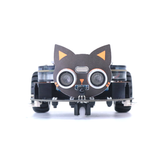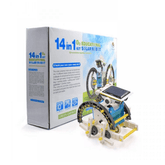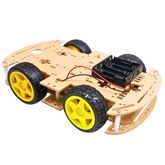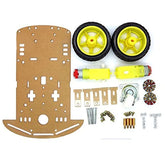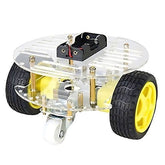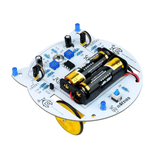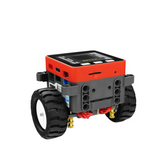The evolution of Robotics
Summary
Step into the captivating world of robotics with "The Evolution of Robotics" blog. Delve into the introduction, unlocking the historical perspective that paved the way for automation and robotics. Explore the dynamic evolution of these technologies, from humble beginnings to cutting-edge advancements. Peer into the future of robotics, where innovation knows no bounds. Brace yourself for an insightful journey that promises a glimpse into the transformative potential of robotics. As we conclude this riveting exploration, you'll be left with a newfound appreciation for the past, present, and thrilling future of robotics. Ready to embark on this techno odyssey? Click now and join the evolution!
Introduction
Robotics, the branch of technology that deals with the design, construction, operation, and application of robots, has become an integral part of modern society. These intelligent machines, capable of performing complex tasks with precision and efficiency, have revolutionized various industries, from manufacturing to healthcare. Robotics has a rich history, dating back to ancient times, and its significance continues to grow as technology advances, shaping the way we live and work.
The concept of robotics emerged from the human desire to automate tasks, reduce physical labor, and increase productivity. The origins of robotics can be traced back to ancient automatons, mechanical devices that were designed to mimic human or animal behavior. These early creations, often powered by water, steam, or clockwork mechanisms, were primarily used for entertainment purposes and were nothing more than novelties. However, as technology progressed, the concept of robotics evolved, and its applications became more practical and widespread.

Historical Perspective
The journey of robotics from ancient automatons to modern-day industrial robots has been marked by several milestones. In the late 18th century, the industrial revolution brought about significant changes in the way goods were produced, and the need for automation became more apparent. This led to the development of the first industrial robots, which were primarily used for repetitive tasks in manufacturing.
One of the earliest examples of an industrial robot was the Unimate, which was developed by George Devol and Joseph Engelberger in the 1960s. This robot was designed to perform tasks such as welding and material handling in a General Motors assembly line. The Unimate was a significant breakthrough in robotics, demonstrating the potential of robots to improve efficiency and productivity in manufacturing processes.
As technology continued to evolve, so did the capabilities of industrial robots. In the 1970s and 1980s, advancements in microprocessors and computer technology led to the development of more sophisticated robots that could perform more complex tasks with greater precision and accuracy. This included the introduction of robotic arms, which were capable of performing a wide range of tasks, from assembly to painting and welding.
Over the years, advancements in technology, such as the development of microprocessors and the advent of artificial intelligence, have transformed the field of robotics. Today, industrial robots are capable of performing complex tasks with a high degree of precision and speed, making them an indispensable part of many industries.

One of the most significant developments in modern robotics has been the introduction of collaborative robots, also known as cobots. These robots are designed to work alongside humans in a safe and efficient manner, allowing for greater flexibility and adaptability in manufacturing processes. Cobots are equipped with sensors and safety features that allow them to detect and avoid collisions with humans, making them a safer and more user-friendly option for many industries.
Evolution of Automation and Robotics
The impact of automation and robotics on various industries cannot be overstated. From manufacturing to healthcare, the use of robots has led to increased efficiency, productivity, and safety. In the manufacturing industry, robots have been instrumental in streamlining production processes, reducing the risk of human error, and improving overall quality.
One of the most significant benefits of using robots in manufacturing is their ability to perform repetitive tasks with a high degree of accuracy and consistency. This not only improves the quality of the end product but also reduces the risk of injuries to human workers. Additionally, robots can work tirelessly without needing breaks or rest, increasing productivity and reducing downtime.
Another industry that has been significantly impacted by the use of robotics is healthcare. In recent years, there has been a surge in the development of medical robots, which are used for a wide range of applications, from surgery to rehabilitation and physical therapy.
Robotic-assisted surgery, for example, has become increasingly common, allowing surgeons to perform complex procedures with greater precision and accuracy. These robots are equipped with specialized instruments and cameras that provide surgeons with a high-definition, three-dimensional view of the surgical site, allowing them to perform procedures with greater precision and accuracy.
In addition to surgical applications, robotics has also been used in rehabilitation and physical therapy. Robotic devices such as exoskeletons and prosthetics have been developed to help patients recover from injuries or disabilities, allowing them to regain mobility and independence.

In recent years, there has been a significant advancement in autonomous and industrial mobile robotics. These robots are designed to move around and perform tasks without human intervention, making them ideal for applications such as material handling, logistics, and transportation.
Autonomous mobile robots (AMRs) are a type of robot that can navigate and operate in complex environments without the need for human guidance. These robots are equipped with sensors and advanced navigation systems that allow them to avoid obstacles, plan efficient routes, and complete tasks autonomously.
AMRs have been widely adopted in industries such as warehousing and logistics, where they are used for tasks such as order picking, inventory management, and material handling. By automating these tasks, AMRs can help to reduce labor costs, improve efficiency, and increase safety by reducing the risk of injuries associated with manual labor.
Another area where autonomous mobile robotics has been making significant strides is in the field of last-mile delivery. Companies such as Amazon and FedEx have been experimenting with the use of autonomous delivery robots to transport packages to customers' doorsteps. These robots are designed to navigate city streets and sidewalks, avoiding obstacles and pedestrians along the way.
While the use of autonomous delivery robots is still in its early stages, it has the potential to revolutionize the way goods are delivered, particularly in urban areas where traditional delivery methods can be inefficient and time-consuming.
Future of Robotics
The current use of robots and their potential future applications are vast and varied. From healthcare to space exploration, robotics has the potential to revolutionize the way we live and work. By 2030, it is expected that the robotics industry will grow significantly, with an emphasis on the development of more advanced and intelligent robots.
One area where robotics is expected to have a significant impact is in the healthcare sector. Robotic-assisted surgery, for example, has become increasingly common, allowing surgeons to perform complex procedures with greater precision and accuracy. Additionally, the use of robotics in rehabilitation and physical therapy is also gaining traction, helping patients recover faster and more effectively.

In the field of space exploration, robotics has already played a crucial role in exploring other planets and celestial bodies. Robotic probes and rovers have been sent to Mars, for example, to study the planet's surface and atmosphere, and to search for signs of life. In the future, it is likely that more advanced robots will be used to explore even further reaches of our solar system and beyond.
Another area where robotics is expected to have a significant impact is in the field of agriculture. Autonomous robots and drones are already being used for tasks such as crop monitoring, precision agriculture, and pest control. In the future, it is likely that more advanced agricultural robots will be developed, capable of performing tasks such as planting, harvesting, and weeding, potentially reducing the need for human labor and increasing efficiency and productivity.
As the use of robotics continues to grow, there is also a need for greater emphasis on the development of ethical and responsible robotics. This includes ensuring that robots are designed and programmed to operate in a safe and responsible manner, and that their use does not negatively impact human workers or society as a whole.
Additionally, there is a need for greater collaboration between robotics researchers, developers, and policymakers to ensure that the benefits of robotics are distributed equitably and that the potential risks and challenges are addressed in a responsible and sustainable manner.
Conclusion
The evolution of robotics has been nothing short of remarkable. From ancient automatons to modern-day industrial robots, the field has come a long way, and its impact on various industries cannot be overstated. As technology continues to advance, the potential for robotics to revolutionize the way we live and work is vast and exciting.
However, it is important to acknowledge that the growth of robotics also presents challenges, such as the potential displacement of human workers and the need for ethical considerations in the development and use of these technologies. As such, it is crucial that the development of robotics is approached with care and consideration, ensuring that it benefits society as a whole while minimizing potential negative impacts.
Despite these challenges, the future of robotics remains bright, with new and innovative applications emerging every day. By embracing the potential of robotics while also addressing its challenges, we can create a world where humans and robots work together in harmony, improving our quality of life and expanding the boundaries of what is possible.



